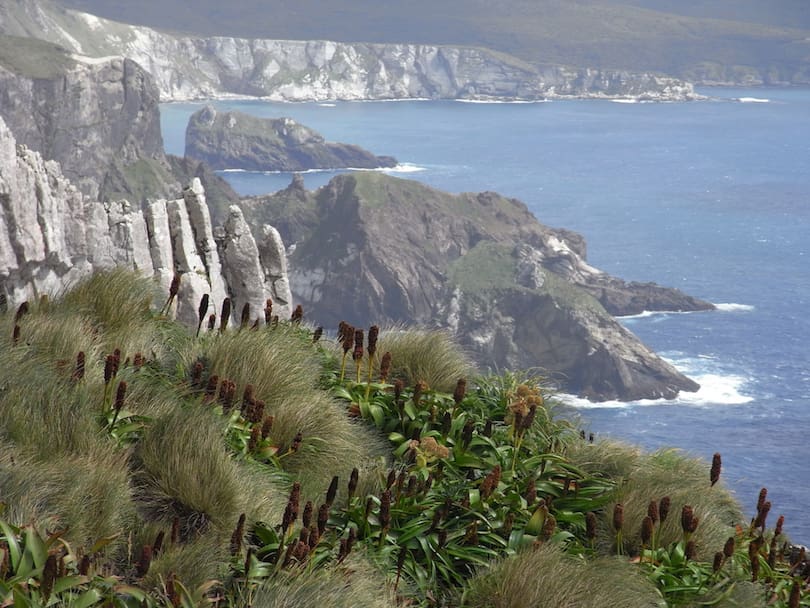Shillong, the picturesque capital of Meghalaya in northeastern India, is a city known for its natural beauty, pleasant climate, and vibrant culture. Planning a trip to Shillong requires careful consideration of the weather, festivals, and various attractions. In this article, we will explore the best time to visit Shillong, taking into account the different seasons, festivals, outdoor activities, local cuisine, accommodation options, shopping opportunities, and essential travel tips.
I. Introduction
Shillong, often referred to as the “Scotland of the East,” is a hill station nestled in the mesmerizing Khasi Hills. With its lush green landscapes, cascading waterfalls, and panoramic views, Shillong offers a unique and enchanting experience to visitors.
II. Weather in Shillong
Shillong experiences a moderate climate throughout the year, with pleasant summers and chilly winters. Understanding the different seasons will help you plan your visit accordingly.
A. Description of the different seasons
- Spring (March to April): Spring in Shillong brings blooming flowers and mild temperatures, making it an ideal time for nature enthusiasts.
- Summer (May to June): Summers in Shillong are comfortable, with temperatures ranging from 15 to 25 degrees Celsius. It is a popular time for tourists seeking respite from the scorching heat of the plains.
- Monsoon (July to September): Shillong receives heavy rainfall during the monsoon season, which enhances the beauty of the region. However, landslides and roadblocks can disrupt travel plans.
- Autumn (October to November): Autumn in Shillong is characterized by pleasant weather and clear skies, offering breathtaking views of the surrounding landscapes.
- Winter (December to February): Winters in Shillong are chilly, with temperatures dropping as low as 2 degrees Celsius. The cold weather adds a charm to the city and makes it a favorite destination for winter enthusiasts.
B. Pros and cons of each season
- Pros of visiting in spring: Witnessing the blossoming flowers, pleasant temperatures, and fewer crowds.
- Pros of visiting in summer: Comfortable weather, ideal for exploring outdoor attractions and engaging in adventure activities.
- Pros of visiting in monsoon: Spectacular waterfalls, lush greenery, and a unique experience of the rainy season.
- Pros of visiting in autumn: Pleasant weather, clear views, and favorable conditions for trekking and hiking.
- Pros of visiting in winter: Snowfall in nearby areas, winter festivals, and the opportunity to enjoy the chilly weather.
III. Festivals and Events
Shillong is a culturally rich city with vibrant festivals celebrated throughout the year. These festivals provide a glimpse into the local traditions and attract tourists from far and wide.
A. Major festivals celebrated in Shillong
- Shillong Autumn Festival: A celebration of the rich cultural heritage of the Khasi tribe, featuring traditional music, dance performances, and local cuisine.
- Nongkrem Dance Festival: A significant festival of the Khasi community, showcasing traditional dances and rituals, including the famous “Ka Pomblang Nongkrem” dance.
- Shad Suk Mynsiem: A grand festival held in April, where young girls in traditional attire dance to the beats of drums and bamboo instruments.
- Behdienkhlam Festival: A unique festival celebrated by the Pnars, featuring a ritualistic dance to ward off evil spirits and promote prosperity.
B. Impact of festivals on tourism
Festivals in Shillong not only provide an opportunity to immerse oneself in the local culture but also attract a significant number of tourists. The festivals contribute to the city’s economy through increased tourism, hotel bookings, and sales of local handicrafts and products.
IV. Tourist Attractions
Shillong offers a plethora of tourist attractions that captivate visitors with their natural beauty and cultural significance. Let’s explore some of the must-visit places in Shillong.
A. Overview of popular tourist spots
- Ward’s Lake: A serene lake surrounded by lush gardens, offering boating facilities and a peaceful retreat.
- Shillong Peak: The highest point in Shillong, providing panoramic views of the city and its surroundings.
- Elephant Falls: A majestic waterfall located just outside the city, comprising three tiers and surrounded by dense forests.
- Don Bosco Centre for Indigenous Cultures: A museum showcasing the diverse indigenous cultures of Northeast India through artifacts, exhibits, and traditional performances.
- Mawlynnong Village: Known as the cleanest village in Asia, Mawlynnong offers a glimpse into sustainable living and boasts a living root bridge.
B. Detailed description of each attraction
1. Ward’s Lake
Ward’s Lake, also known as Pollock’s Lake, is a popular tourist spot in Shillong. The lake is surrounded by a well-maintained garden adorned with colorful flowers, making it a perfect spot for a leisurely stroll or a picnic with family and friends. Visitors can enjoy boating on the lake, rent paddleboats, or simply relax on the lakeside benches while soaking in the tranquility of the surroundings.
2. Shillong Peak
Shillong Peak offers a breathtaking view of the entire city and its picturesque surroundings. Situated at an altitude of 1,965 meters, it is the highest point in Shillong. Visitors can reach the peak by road or by trekking through a scenic trail. The panoramic view from the top is truly mesmerizing, especially during sunrise or sunset. The peak also houses a radar station operated by the Indian Air Force.
3. Elephant Falls
Elephant Falls is a must-visit attraction located just a short drive from Shillong. The falls, consisting of three cascading tiers, derive their name from a rock resembling an elephant’s trunk. Surrounded by lush green forests, the falls offer a tranquil atmosphere, making it an ideal spot for nature lovers and photography enthusiasts. Visitors can descend through the well-maintained stairs to get a closer view of the falls and feel the misty spray on their faces.
4. Don Bosco Centre for Indigenous Cultures
The Don Bosco Centre for Indigenous Cultures is a unique museum that showcases the rich cultural heritage and diversity of Northeast India. The center houses several galleries that display artifacts, handicrafts, photographs, and audio-visual presentations representing the indigenous tribes of the region. Visitors can learn about the traditional practices, costumes, music, and languages of various tribes. The center also hosts cultural events and performances, providing a comprehensive experience of the region’s indigenous cultures.
5. Mawlynnong Village
Mawlynnong, a small village located approximately 90 kilometers from Shillong, has gained international recognition for its cleanliness and eco-friendly practices. The village is adorned with beautifully manicured gardens, bamboo dustbins, and innovative structures like living root bridges. Visitors can explore the village, interact with the locals, and learn about their unique lifestyle. Mawlynnong also serves as the gateway to the nearby living root bridges of Cherrapunji, another marvel of nature.
V. Outdoor Activities
Shillong offers a range of outdoor activities for adventure enthusiasts and nature lovers. The favorable climate and stunning landscapes provide the perfect setting for engaging in thrilling adventures.
A. Adventure sports and recreational activities
- Trekking: Shillong and its surrounding areas boast numerous trekking trails that take you through dense forests, sparkling waterfalls, and charming villages. Popular trekking routes include the David Scott Trail, the Living Root Bridges Trek, and the Shillong Peak Trek.
- River Rafting: The crystal-clear rivers surrounding Shillong, such as the Umiam River and the Ranikor River, offer exciting river rafting opportunities. Rafting through the gushing rapids amidst the picturesque scenery is an adrenaline-pumping experience.
- Rock Climbing: The rocky terrain of Shillong provides ample opportunities for rock climbing enthusiasts. The cliffs and boulders in Mawphlang and Mawjymbuin are popular spots for rock climbing and bouldering.
- Golfing: Shillong Golf Course, one of the oldest golf courses in India, is a paradise for golf enthusiasts. Set amidst rolling hills and pine forests, this 18-hole golf course offers a unique golfing experience.
B. Best time for outdoor activities
The best time to indulge in outdoor activities in Shillong depends on personal preferences and the specific activity chosen. Spring and autumn are generally considered ideal as the weather is pleasant, and the natural beauty of the region is at its peak. Summer is suitable for adventure activities like trekking and river rafting, while winter offers a different charm with its chilly weather and occasional snowfall.
VI. Local Cuisine
Exploring the local cuisine is an integral part of any travel experience. Shillong offers a delightful culinary journey with its unique blend of flavors influenced by Khasi, Jaintia, and Garo tribes.
A. Introduction to traditional food
The traditional food of Shillong is primarily non-vegetarian, with a focus on locally available ingredients and spices. Rice is a staple, and dishes are often prepared with pork, chicken, fish, or vegetables, accompanied by spicy chutneys and fermented bamboo shoots.
B. Popular local dishes
- Jadoh: A delectable rice dish cooked with pork, onions, and a blend of traditional spices, giving it a distinct flavor.
- Dohneiiong: A traditional Khasi delicacy made with pork and black sesame seeds, creating a rich and flavorful curry.
- Tungrymbai: A fermented soybean dish with a unique tangy taste, often served as a side dish or accompaniment.
- Pumaloi: A steamed rice cake wrapped in banana leaves, cooked with pork or chicken and flavored with local herbs.
- Pudoh: A popular street food snack made with rice flour, onions, and spices, shaped into dumplings and steamed.
VII. Accommodation Options
Shillong offers a range of accommodation options catering to different budgets and preferences. From luxury resorts to budget guesthouses, there is something for everyone.
A. Types of accommodations available
- Luxury Resorts: Shillong boasts several luxurious resorts that provide world-class amenities, spa facilities, and stunning views of the surrounding landscapes.
- Boutique Hotels: For travelers seeking a unique and personalized experience, boutique hotels in Shillong offer stylish accommodations with a touch of local culture and charm.
- Guesthouses and Homestays: These options provide an opportunity to stay with local families, experience their hospitality, and immerse oneself in the local lifestyle.
- Budget Hotels: Shillong has numerous budget hotels that offer comfortable and affordable accommodations, suitable for travelers on a tight budget.
B. Recommendations for different budgets
- Luxury: [Insert Name of Luxury Resort] is a top-rated luxury resort in Shillong, offering breathtaking views, plush rooms, fine dining options, and impeccable service.
- Boutique: [Insert Name of Boutique Hotel] is a charming boutique hotel located in the heart of the city, known for its artistic interiors, cozy ambiance, and personalized attention.
- Guesthouse/Homestay: [Insert Name of Guesthouse/Homestay] provides a warm and homely atmosphere, giving visitors an opportunity to experience the local hospitality and culture.
- Budget: [Insert Name of Budget Hotel] is a budget-friendly hotel that offers clean and comfortable rooms, friendly staff, and a convenient location for exploring the city.
VIII. Shopping in Shillong
Shillong is a shopper’s paradise, offering a blend of traditional and modern shopping experiences. From bustling markets to trendy boutiques, there is a wide variety of products to explore.
A. Overview of shopping areas
- Police Bazaar: The busiest commercial hub of Shillong, offering a wide range of shops selling clothing, handicrafts, jewelry, and local produce.
- Bara Bazaar: Known for its traditional Khasi tribal market, Bara Bazaar is a vibrant place to shop for traditional clothing, bamboo products, and local spices.
- Laitumkhrah Market: This market is famous for trendy fashion boutiques, souvenir shops, and street food stalls, making it a favorite among the youth.
- Lewduh Market: Also known as the “Khlieh Iew Market,” it is one of the largest traditional markets in Northeast India, offering a vast array of products, including traditional herbs, spices, and handicrafts.
B. Unique products to buy
- Traditional Handicrafts: Shillong is known for its exquisite handwoven shawls, bamboo and cane products, traditional jewelry, and intricate woodwork.
- Local Spices and Tea: Take home aromatic spices like black pepper, turmeric, and bay leaves, as well as the famous Meghalaya tea, known for its refreshing taste.
- Traditional Attire: Explore the local markets for traditional Khasi and Jaintia dresses, such as the Jainsem and Dhara, to add a touch of ethnic elegance to your wardrobe.
- Music and Instruments: Shillong, often referred to as the “Rock Capital of India,” is famous for its music scene. Look for music albums, musical instruments, and merchandise of local bands.
IX. Safety and Travel Tips
When visiting Shillong, it is essential to keep certain safety and travel tips in mind to ensure a hassle-free and enjoyable trip.
A. Safety tips
- Weather Awareness: Shillong experiences moderate to heavy rainfall, so it’s advisable to carry rain gear and be cautious of slippery surfaces.
- Local Customs and Etiquette: Respect the local customs and traditions. Dress modestly, especially while visiting religious places, and seek permission before taking photographs of people.
- Personal Safety: Take necessary precautions to safeguard your belongings and avoid isolated or dimly lit areas, especially at night.
- Health Precautions: Stay hydrated, carry mosquito repellent, and consult a doctor regarding any required vaccinations before your trip.
B. Travel tips
- Plan Ahead: Research the best time to visit Shillong based on your preferences and the activities you wish to engage in. Make advance bookings for accommodations, especially during peak tourist seasons.
- Local Transportation: Explore the city by hiring a local taxi or using shared cabs. It’s advisable to negotiate fares in advance or opt for pre-paid taxis to avoid any misunderstandings.
- Cultural Sensitivity: Immerse yourself in the local culture and interact with the friendly locals to learn more about their way of life.
- Environmental Responsibility: Respect the natural beauty of Shillong by avoiding littering and following eco-friendly practices.
Conclusion
Shillong, with its rich culture, stunning landscapes, and vibrant festivals, offers a unique travel experience for visitors. From exploring the local cuisine to indulging in outdoor adventures and shopping for traditional handicrafts, there is something for everyone in this beautiful city. The best time to visit Shillong depends on personal preferences and the desired activities, so plan your trip accordingly and immerse yourself in the beauty and charm of this enchanting city.
Frequently Asked Questions (FAQs)
- Q: What is the best time to visit Shillong? A: The best time to visit Shillong is during spring (March to May) and autumn (September to November) when the weather is pleasant and the natural beauty is at its peak.
- Q: What are the major festivals celebrated in Shillong? A: Shillong is known for its vibrant festivals, including the Shillong Autumn Festival, Nongkrem Dance Festival, Shad Suk Mynsiem, and Behdienkhlam Festival.
- Q: What are the must-visit tourist attractions in Shillong? A: Some of the must-visit tourist attractions in Shillong include Ward’s Lake, Shillong Peak, Elephant Falls, Don Bosco Centre for Indigenous Cultures, and Mawlynnong Village.
- Q: Are there outdoor activities available in Shillong? A: Yes, Shillong offers a range of outdoor activities such as trekking, river rafting, rock climbing, and golfing, which are perfect for adventure enthusiasts and nature lovers.
- Q: What are the popular local dishes to try in Shillong? A: Some popular local dishes to try in Shillong are Jadoh, Dohneiiong, Tungrymbai, Pumaloi, and Pudoh.






